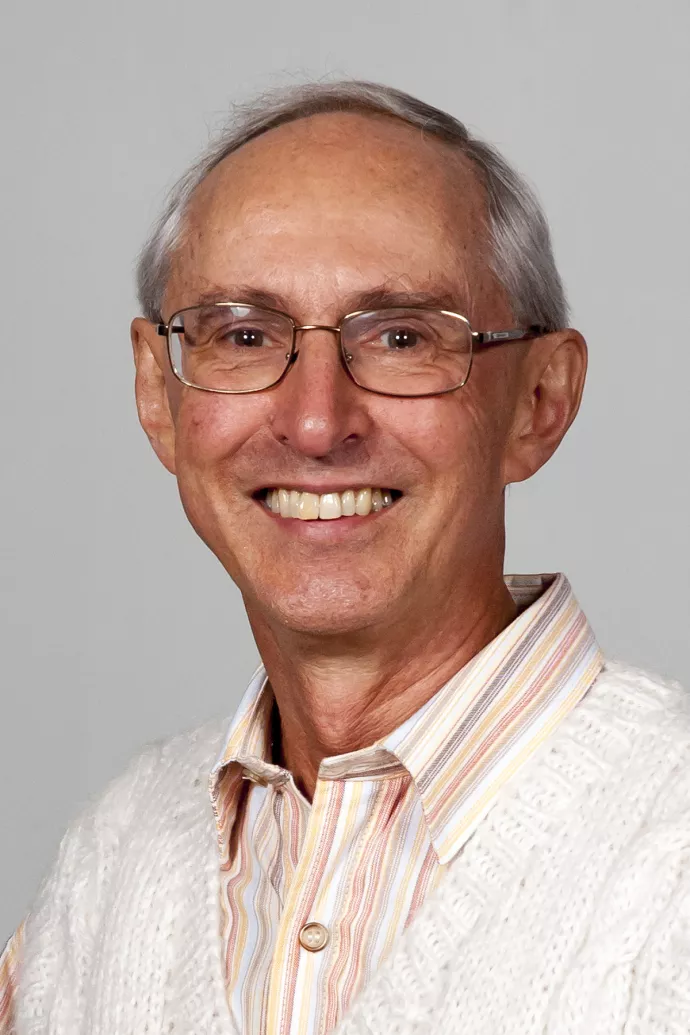UTM physics professor David Dunlop wins top award for contributions to science

A story about travelling the world and some sketches on the back of an envelope launched a decades-long career for UTM Professor Emeritus David Dunlop, whose lifetime achievement in the field of geophysics is being recognized by the American Geophysical Union (AGU).

“David has been a dedicated and invaluable member of our community for many years,” says Lindsay Schoenbohm, chair of UTM’s Department of Chemical and Physical Sciences. “It is wonderful now to see this highest-level recognition for his scholarly achievements.”
Yet, if not for two fortunate encounters with faculty at U of T during his early studies, the field of geophysics may not have benefited from Dunlop’s lasting scholarly contributions.
An engineering physics student at the St. George campus in the early 1960s, Dunlop and his classmates heard from representatives of various disciplines who came to woo students to their fields. John Tuzo Wilson, a professor of geophysics who would later become principal of Erindale College (now UTM), was sent to convince students to choose geophysics as their specialization.
“‘I just came back from China,’” Dunlop recalls Wilson telling the gathered students. “‘Go into geophysics and see the world.’”
Wilson’s travelogue “didn’t emphasize the science,” Dunlop says. The science, however, proved to be fascinating. “About 10 of us chose geophysics.”
After completing his Bachelor of Applied Science in 1963, Dunlop met with U of T geophysicist Gordon West, who would become his graduate supervisor.
“He spent an hour with me sketching magnetic domains on the back of an envelope,” Dunlop says. “That decided the course of the rest of my scientific life.”
Dunlop’s research focuses on the magnetic properties of rocks and minerals. Like a computer’s hard drive, which uses magnetic memory to store data, the magnetic minerals in the rocks also have information imprinted on them. That information can date back billions of years and offer clues to how Earth (or other planets) formed and evolved. Dunlop explains that the direction and strength of the Earth’s magnetic field, how hot a planet was when it formed, and plate movement can be discerned by studying rocks.
“Most rocks contain at least some magnetic material,” he says.
Dunlop, whose best-known research has been in the fundamental magnetic properties of rocks and minerals and in Precambrian paleomagnetism and plate tectonics, initially conducted his experimental work at Scarborough College (now UTSC) because the nearby subway line at the St. George campus made the area “magnetically noisy.” Dunlop explains that the subway uses a DC current and there’s a “massive magnetic field that permeates the St. George campus.”
In the late 1960s, after completing a postdoc in Tokyo, Japan and Paris, France, Dunlop wanted to return to Toronto to raise his family.
“Tuzo [Wilson] found me a place at Erindale,” Dunlop recalls. He conducted his research in the Paleomagnetism lab – the “lab in the woods” he calls it – with his colleague and wife Özden Özdemir, whom he says he “hired away” from Memorial University.
During their time at UTM, Dunlop and Özdemir wrote what would become known as “the bible” in their field. It took the pair 10 years to write the 600-page text. At one point the publisher despaired whether the book would ever be finished, and Dunlop recalls chapters spread out in 17 piles on the bed in their spare room. Coming in at twice the length originally planned, Rock Magnetism: Fundamentals and Frontiers, remains the standard text in the field.
During a 36-year career at the University of Toronto’s Mississauga and St. George campuses, Dunlop taught and mentored countless students and early career professionals who have gone on to careers in geological and physical sciences. He has been the sole author of 63 papers and has co-authored more than 150 papers in scholarly journals and books.
He has also had an opportunity to travel the world to conduct his research, just as Wilson hinted at decades ago.
“It’s been a wonderful life we’ve had,” says Dunlop, who continues to publish research.



